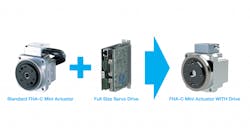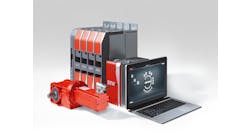I liked Russ Rhinehart’s article on “Variations in the PID Algorithm” very much (August '21, p9) and it is worth the effort. My experience over the years is that many professionals are not sure what formulation is used in their DCS (in some systems that is not even documented). Even more severe, the majority did not know whether their PID was internally working in engineering units or normalized, a crucial factor for tuning—and some vendors’ customer support staff did not have the slightest idea, let alone understood the implications.
Today, many different tuning rules do exist and myriad formulas can be found. Yet it is very often unclear what PID formulation was used to derive the results (e.g. a parallel or a series form). Of course, the next step would be the adaptation of the result for the version in use.
Thus my proposal: How about an article about key tuning formulas, their development base and the conversion formulas?
Hans Eder
[email protected]
I’d like to complement John Rezabek’s discussion of lessons learned from Foundation fieldbus (July '21, p16) that we can apply to Ethernet-APL with one important dimension that wasn’t even part of the conversation in the early days of fieldbus: cybersecurity. It is likely that multiple communication protocols will use Ethernet-APL: HART-IP, EtherNet/IP, Profinet, etc. Since they will all use the same physical layer, the different protocols will be able to coexist on the same wire-pair. This has already been demonstrated at trade shows. The new dimension of cybersecurity will require some sort of join process to ensure the correct device is being added to the network. Whatever steps a user must take to add a device to the network, it is imperative that it be exactly the same for each and every protocol. Otherwise, the market for this new technology will fragment. The end-user community does not have the staff to absorb multiple ways to add a device to a network. There are other considerations such as encryption and authentication technologies, but all of this must be transparent to the user. The market success of Ethernet-APL will depend not only upon those items John pointed out, but also on the way in which cybersecurity is implemented.
Marty Zielinski
Technology Director, Retired, Emerson
[email protected]
It’s important to note that Ethernet-APL is not just for traditional instrumentation. Imagine other products that could benefit from APL: video cameras, IR cameras, local operator panels, LiDAR, etc. These are high data-rate products that can make better use of 10 Mbit/s than a temperature transmitter.
APL also supports common ICT protocols like HTTPS for web browsing and RTSP for video. This opens the possibility of interesting new device capabilities and new kinds of devices. I think APL will be mostly greenfield projects. I agree that Foundation fieldbus and Profibus PA instruments may fill the gap of devices missing APL since they can use the same infrastructure. There will be a mix of APL and non-APL. Maybe a simple sensor will not be APL, but also share the same single infrastructure.
Analog Devices has developed a chip that enables a device to be all three and facilitate potential migration. Higher networks will use OPC-UA regardless of what the field devices use.
Jonas Berge
Senior Director, Applied Technology, Emerson
[email protected]



